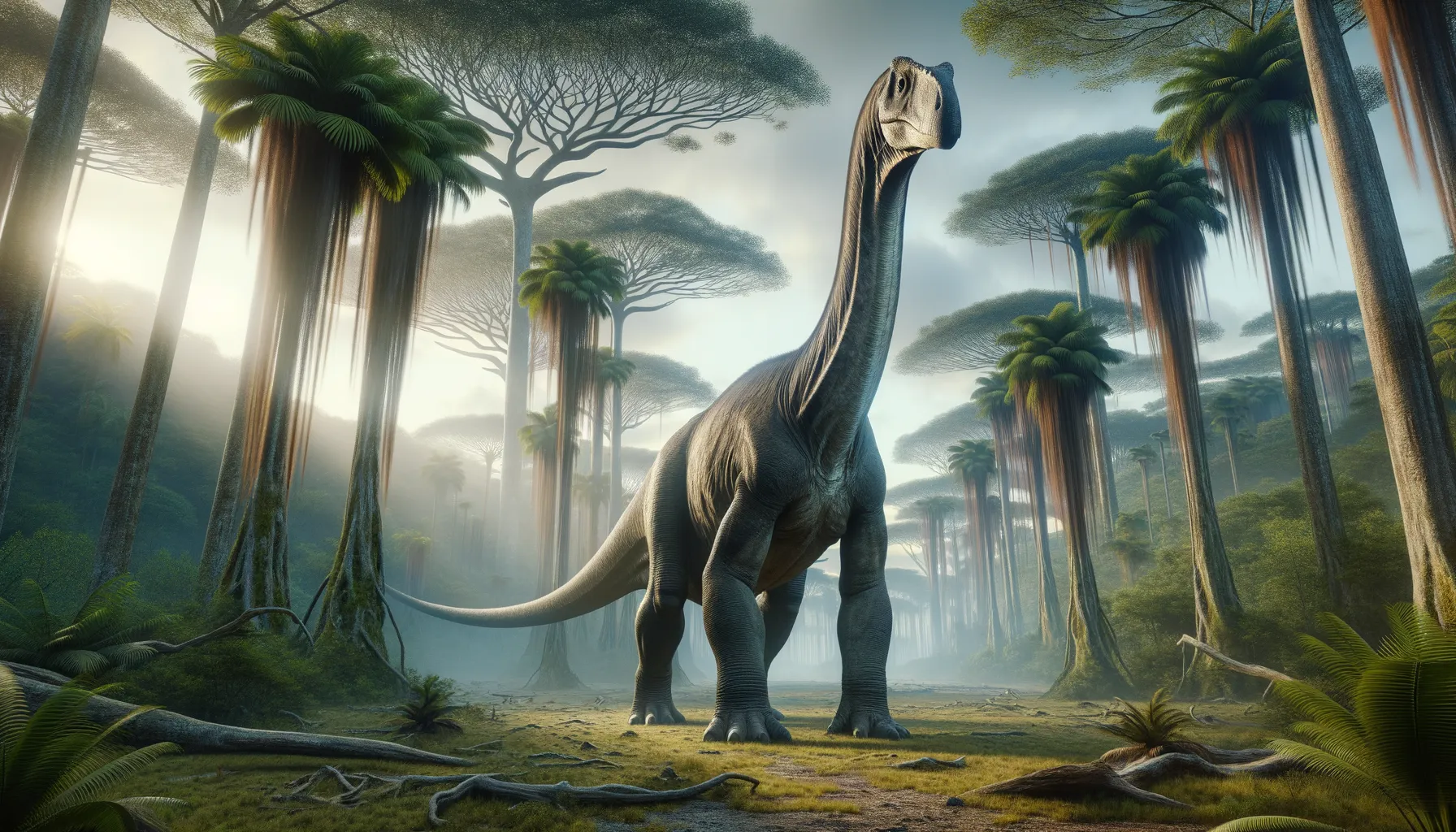
Brasilotitan
A Brazilian giant from the age of dinosaurs.
Period
Cretaceous
Length
Measured up to 12 meters long.
Height
Stood about 3 meters tall at the hips.
Weight
Weighed approximately 10 tons.
Brasilotitan was a giant dinosaur that roamed the land during the late Cretaceous period. This massive herbivore, resembling the long-necked giants, lived in what is now modern-day Brazil. Known for its size and strength, Brasilotitan was part of the titanosaur family, which included some of the largest creatures to ever walk the Earth. Its sturdy limbs suggest it was well-adapted to support its tremendous weight.
Diet
Brasilotitan was an herbivore, feeding on the lush vegetation that covered its environment. Its diet consisted mainly of leaves, branches, and ferns it could reach with its long neck. This giant dinosaur needed large quantities of food to sustain its size.
Hunting
Being a herbivore, Brasilotitan did not hunt other animals. Its primary concern was finding sufficient food to sustain its enormous body. It likely spent much of its time browsing for plants or migrating in search of larger food sources.
Environmental challenges
Brasilotitan faced environmental challenges such as seasonal changes affecting available food sources. Climate fluctuations could lead to periods of drought, affecting the vegetation they depended on. In addition, forest fires or natural predators might have posed occasional threats. However, their massive size would have provided some protection from smaller predators.
Speed
Slow-moving due to its massive size.
Lifespan
Could reach several decades.
First discovery
Discovered in Brazil around 2009.
Fun Facts
- Brasilotitan is a dinosaur species that lived about 80 million years ago during the Late Cretaceous period.
- Its name means 'Brazilian titan,' highlighting its discovery in Brazil.
- Brasilotitan was a type of sauropod, which are known for their long necks and massive bodies.
- These dinosaurs were herbivores, meaning they primarily fed on plants.
- The fossils of Brasilotitan were discovered in the São Paulo State of Brazil, providing valuable insight into South America's prehistoric life.
- Brasilotitan was not as large as some of its sauropod relatives, making it unique among its giant peers.
- The discovery of Brasilotitan helps scientists understand the diversity and evolution of dinosaurs in South America.
Growth and Development
Brasilotitan underwent significant growth during its early years. From a small hatchling, it grew into one of the largest creatures of its time. Its development would have included a rapid growth phase to reach a size capable of deterring predators. Over time, this growth slowed once it reached maturity.
Habitat
Brasilotitan inhabited the vast floodplains and forests of South America. Its habitat provided ample food and water to support its massive size. These regions offered a suitable environment with diverse plant life for Brazilotitan. Such habitats allowed them to live in herds, providing protection and social interaction.
Interaction with other species
Brasilotitan coexisted with other herbivorous dinosaurs and small mammals of its time. While they generally avoided predators, their size reduced the number of threats. Interaction with other species was likely minimal due to their dietary needs. Occasionally, they may have shared resources with other large herbivores.
Natural lifespan
Brasilotitan likely lived for several decades in the wild.
Reproduction
Brasilotitan likely laid eggs in secure locations, like sandy banks or shallow pits. Nesting in groups, they may have offered some protection for their offspring. Hatchlings would be vulnerable, relying on size and herd for safety. Parental involvement was likely minimal after laying the eggs.
Social behaviour
Brasilotitan may have traveled in herds for protection. Herding behaviors helped them defend against predators. Such social structures also facilitated mating and raising the young. Interaction within herds was essential for survival and growth.
Fossil locations
Fossils of Brasilotitan have been primarily found in Brazil. These discoveries provide crucial insight into the dinosaur's existence during the Cretaceous. The locations contribute valuable knowledge about the region's prehistoric environment. Such fossil findings enhance our understanding of dinosaur evolution in South America.
